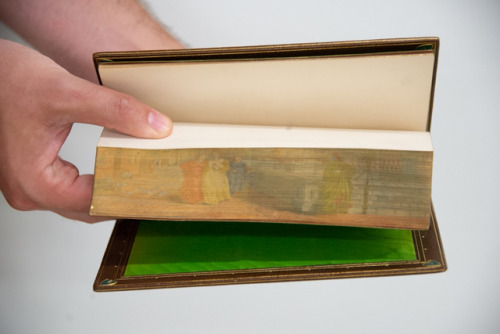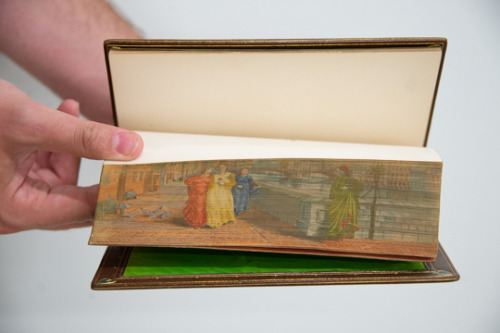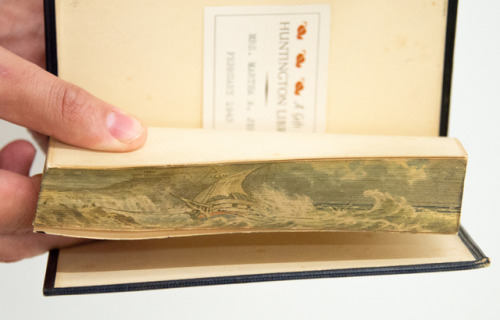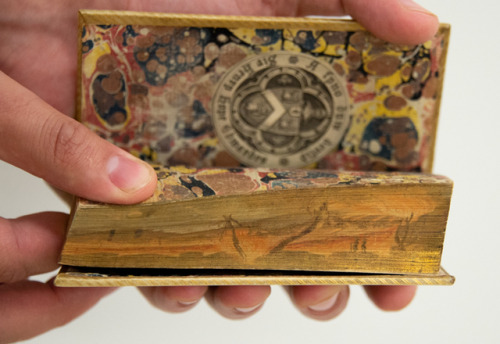Did you know some books contain hidden images? Fore-edge painting, or decorating the closed leaves o
Did you know some books contain hidden images? Fore-edge painting, or decorating the closed leaves of a book, first began in the 11th century; but it wasn’t until the 17th century that the practice of a “disappearing” fore-edged painting began. Artists painted the inside edges of a book’s pages so that the image would only be seen when the pages were fanned in a certain direction. Above are some lovely examples found in our library archives.images:[1-4] Dante Alighieri (1265-1321), “The Divine Comedy,” 1854. London: Chapman and Hall. The Huntington Library, Art Collections, and Botanical Gardens.[5] William Falconer (1732-1769), “The Poetical Works of William Falconer,” 1836. London: William Pickering. The Huntington Library, Art Collections, and Botanical Gardens.[6-7] John Milton (1608-1674), “Paradise Lost,” 1776. Glasgow: Printed by Robert and Andrew Foulis printers to the University. The Huntington Library, Art Collections, and Botanical Gardens.[8] View of all three books closed, without the hidden illustrations visible. The Huntington Library, Art Collections, and Botanical Gardens. -- source link
#nationalbookloversday#fore-edge painting#fore-edge books#divine comedy#milton#paradise lost#william falconer#library






